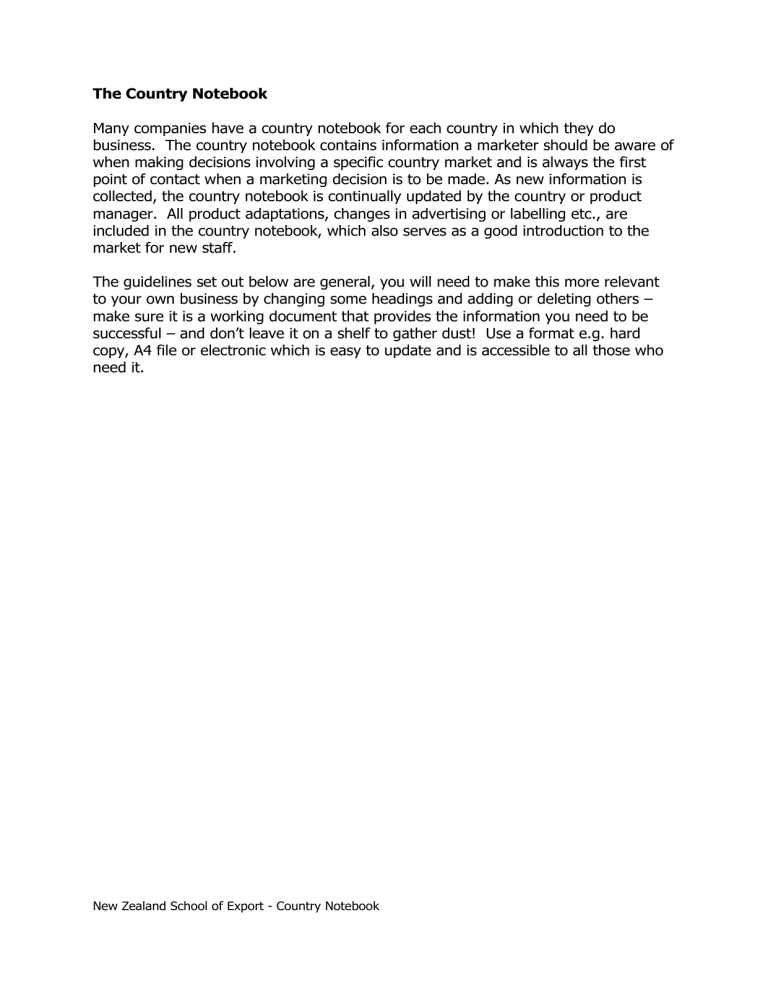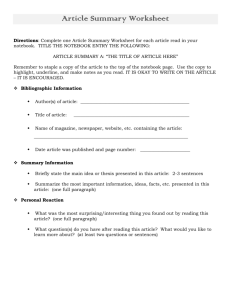The Country Notebook - New Zealand School of Export

The Country Notebook
Many companies have a country notebook for each country in which they do business. The country notebook contains information a marketer should be aware of when making decisions involving a specific country market and is always the first point of contact when a marketing decision is to be made. As new information is collected, the country notebook is continually updated by the country or product manager. All product adaptations, changes in advertising or labelling etc., are included in the country notebook, which also serves as a good introduction to the market for new staff.
The guidelines set out below are general, you will need to make this more relevant to your own business by changing some headings and adding or deleting others – make sure it is a working document that provides the information you need to be successful – and don’t leave it on a shelf to gather dust! Use a format e.g. hard copy, A4 file or electronic which is easy to update and is accessible to all those who need it.
New Zealand School of Export - Country Notebook
V
I Introduction
Include short profiles of the company, the product to be exported and the country with which you want to trade.
II Brief discussion of the country’s relevant history.
III Geographical setting
Location
Climate
Topography
IV Social Institutions
A Family.
1.
The nuclear family
2.
The extended family
3.
Female/male roles (are they changing or static?).
B Education.
1.
The role of education in society
2.
Literacy rates
C Political System.
1.
Political structure
2.
Stability of government
3.
Special taxes
4.
Role of local government
D Legal system
1.
Organisation of the judiciary system
2.
Code, common, socialist or Islamic-law country?
3.
Participation in patents, trademarks and other conventions
E Social Organisations.
1.
Group behaviour
2.
Social classes
3.
Race, ethnicity and subcultures
F Business customs and practices.
Religion and aesthetics
A Religion and other belief systems
1.
Which religions are prominent?
2.
Membership of each religion
B Aesthetics
1.
Visual arts (fine arts, plastics, graphics, public colours etc.).
2.
Importance given to aesthetics
New Zealand School of Export - Country Notebook
VI Living conditions.
A Diet and nutrition
1.
Typical meals
B Housing.
2.
Types of housing available
3.
Do most people own or rent?
4.
Do most people live in one-family dwellings or with other families?
C Clothing.
1.
National dress
2.
Types of clothing worn at work
D Recreation, sports and other leisure activities
E Social security
F Healthcare
VII Language
A Official language(s)
B Spoken versus written language(s)
VIII Executive Summary
New Zealand School of Export - Country Notebook







